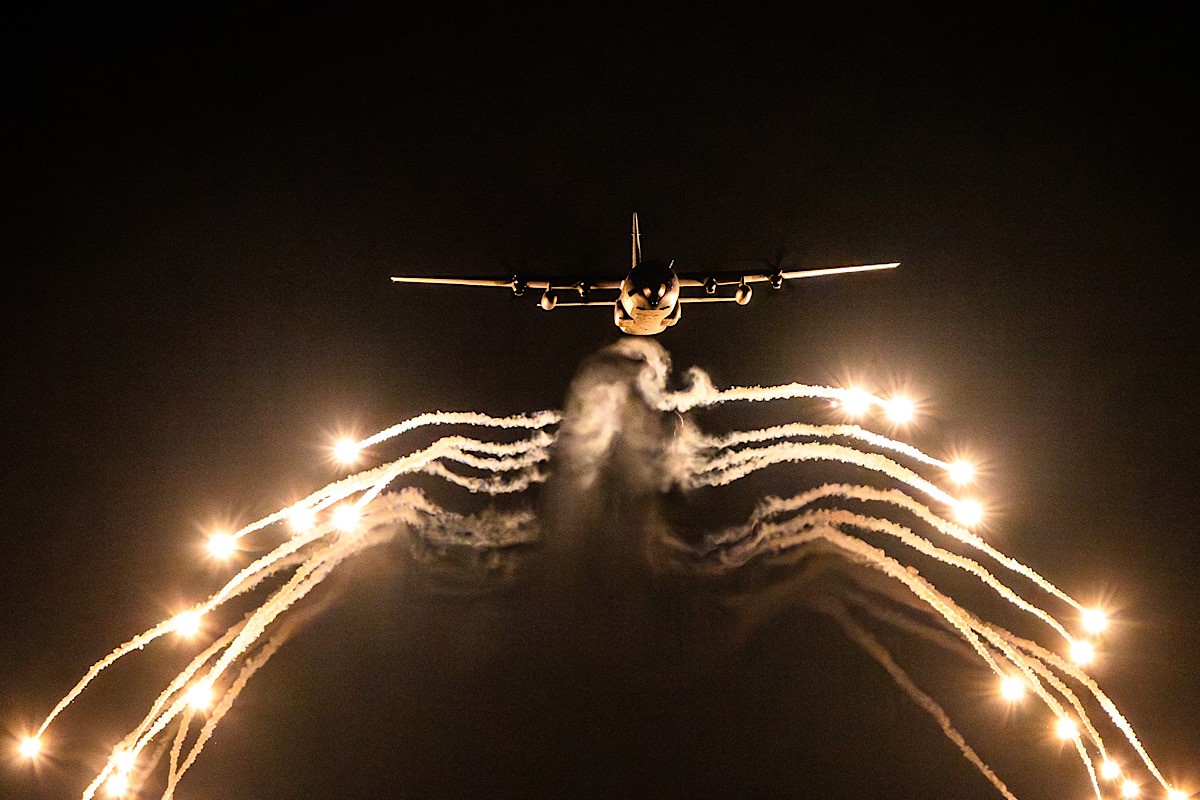Description

Disclaimer: Copyright infringement not intended.
Context
IAF conducts 'EXERCISE - VAYU SHAKTI-24' in Rajasthan.
Details
'EXERCISE - VAYU SHAKTI-24'
- In keeping with this year's theme of the Exercise, 'Lightning Strike from the Sky', over 120 aircraft displayed the lAF's offensive capabilities by day as well as by night.
- Fighter aircraft of the Indian Air Force including the Rafale, Su-30 MKI, MiG-29, Mirage-2000, Tejas and Hawk attacked and destroyed simulated enemy targets on ground and in the air with deadly precision.
- These attacks were delivered in multiple modes and directions, employing a variety of Precision Guided Munitions as well as conventional bombs and rockets.
- Upholding lAF's firm commitment to 'AtmaNirbhar Bharat', the indigenously built Tejas aircraft showcased its swing-role capability and destroyed an aerial target with a missile, followed by the engagement of a ground target with bombs.
- Keeping up with the technological advancements in combat domain and the lessons learnt from recent conflicts, the lAF also displayed a long-range unmanned drone, which destroyed a simulated enemy radar site, with pinpoint accuracy.
- An IAF Rafale also successfully engaged an aerial target with a beyond visual range air-to-air missile.
- Combat support operations by transport aircraft included a Containerised Delivery System drop by a C-17 heavy-lift aircraft and an assault landing by a C-130J carrying IAF Special Forces, Garuds.
- The Apache attack helicopter demonstrated its firepower in this event for the first time, by engaging targets with Air to Ground guided missiles, while Mi-17 helicopters engaged ground targets with rockets.
- Joint operations included the IAF and Indian Army's weaponised version of the Advanced Light Helicopters Mk-IV devastating simulated enemy targets using their rockets and swivel guns.
- As another first, IAF Chinook helicopters demonstrated rapid deployment of combat assets by airlifting the Indian Army's M-777 Ultra-Light Howitzers in an underslung mode enabling prompt destruction of simulated enemy targets on ground.
- Mi-17 helicopters carried out an ‘Urban Intervention' demonstrating their prowess in anti-terror/insurgency operations aimed at clearing hideouts of inimical elements.
- The indigenous Air Defence Systems, Akash and SAMAR missile systems were also showcased, destroying multiple aerial targets.
- Night events displayed for the first time the capabilities of indigenous Light Combat Helicopter 'Prachand' wherein it neutralised designated target with rockets.
- This was followed by a Jaguar and Su-30 MKI dropping heavy calibre and area weapons at night showcasing the strategic bombing capability of the lAF.
- Remotely Piloted Aircraft carried out the bomb damage assessment of all targets that was live streamed to the operations centre and to the audience.
- The event also included a free fall drop by the Akashganga team and flare dispensing by C-130J by night.
- During the display, approximately 50 tonnes of ordnance was dropped in a short span of two hours over an area of two square km. The event truly showcased IAFs offensive lethality and precision targeting capability.

Akash Missile
- Developed by the Defence Research and Development Organisation (DRDO), produced by Bharat Dynamics Ltd (BDL).
- Short-range Surface-to-Air Missile (SAM).
- Engages four aerial targets simultaneously at a range of 25 km from a single firing unit.
- Capable of targeting multiple threats concurrently in group or autonomous modes.
- Equipped to counter enemy jamming and evasion tactics.
- Effective range of 4.5 km to 25 km, with an altitude range of 100 meters to 20 km.
- Length: 5,870 mm; Diameter: 350 mm; Weight: 710 kg.
SAMAR missile systems
- Surface to Air Missile for Assured Retaliation (SAMAR) is a short-range air-defence system. It has been developed by a unit under the IAF’s Maintenance Command.
- The system is credited with a maximum range of 10–12 km and is used against low-flying aerial targets. It can engage aerial threats with missiles operating at a speed range of 2 to 2.5 Mach.
- The SAMAR-1 system uses the IAF's existing inventory of shelf-life-expired Russian Vympel R-73E infrared‐guided air-to-air missiles (AAMs) for the surface-to-air role.
- The system features a twin-turret launch platform capable of launching two missiles in single and salvo modes, depending on the threat scenario.
- Each missile launcher had an electro-optic system visible.
|
PRACTICE QUESTION
What are the key challenges and strategies for enhancing India's defense security in the 21st century geopolitical landscape? 200 words
|
















